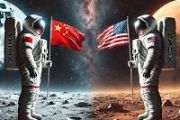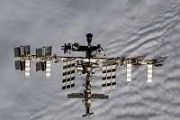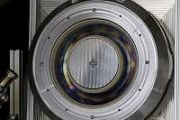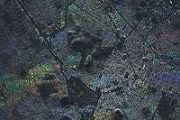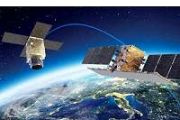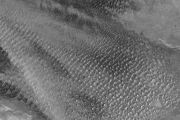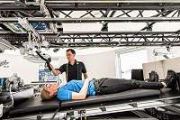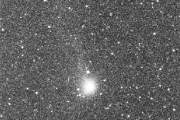
Copernical Team
EU chief's plane hit by suspected Russian GPS jamming in Bulgaria
 A plane carrying EU chief Ursula von der Leyen was hit by GPS jamming as it readied to land in Bulgaria and Russia was suspected to be behind the incident, the European Commission said Monday.
The commission said Bulgarian authorities believed Moscow was responsible for the incident on Sunday but it was not clear whether the aircraft was deliberately targeted as such attacks are common in th
A plane carrying EU chief Ursula von der Leyen was hit by GPS jamming as it readied to land in Bulgaria and Russia was suspected to be behind the incident, the European Commission said Monday.
The commission said Bulgarian authorities believed Moscow was responsible for the incident on Sunday but it was not clear whether the aircraft was deliberately targeted as such attacks are common in th Self-deploying composite material promises leap in robotic design
 A research team at Pusan National University has unveiled a self-deploying composite material that could transform the design of robotics, aerospace systems, and adaptive structures. The breakthrough relies on a multi-resin dispensing technique for fiber-reinforced polymers (FRPs) that combines rigid and flexible epoxy resins, allowing selective tuning of structural rigidity within a single piec
A research team at Pusan National University has unveiled a self-deploying composite material that could transform the design of robotics, aerospace systems, and adaptive structures. The breakthrough relies on a multi-resin dispensing technique for fiber-reinforced polymers (FRPs) that combines rigid and flexible epoxy resins, allowing selective tuning of structural rigidity within a single piec 'Blood Moon' to rise during total lunar eclipse Sunday night
 Stargazers will have a chance to see a "Blood Moon" on Sunday night during a total lunar eclipse visible across Asia and swathes of Europe and Africa.
When the Sun, Earth and Moon line up, the shadow cast by the planet on its satellite makes it appear an eerie, deep red colour that has astounded humans for millennia.
People in Asia, including India and China, will be best placed to see S
Stargazers will have a chance to see a "Blood Moon" on Sunday night during a total lunar eclipse visible across Asia and swathes of Europe and Africa.
When the Sun, Earth and Moon line up, the shadow cast by the planet on its satellite makes it appear an eerie, deep red colour that has astounded humans for millennia.
People in Asia, including India and China, will be best placed to see S Real-time tracking of atomic nucleus magnetism achieved in quantum experiment
 Researchers at Delft University of Technology have, for the first time, directly observed the magnetic nucleus of a single atom switching in real time. Using a scanning tunneling microscope (STM), the team read out the nuclear spin through the atom's electrons and discovered that the spin remained stable for several seconds, far longer than expected. The results, reported in Nature Communication
Researchers at Delft University of Technology have, for the first time, directly observed the magnetic nucleus of a single atom switching in real time. Using a scanning tunneling microscope (STM), the team read out the nuclear spin through the atom's electrons and discovered that the spin remained stable for several seconds, far longer than expected. The results, reported in Nature Communication SpaceX launches 28 Starlink satellites from Cape Canaveral
 SpaceX launched 28 Starlink satellites from Florida on Wednesday morning.
The Falcon 9 rocket lifted off from the Cape Canaveral Space Force Station at 7:56 a.m. EDT.
No sonic booms were heard from the launch.
The booster, on its 14th flight, landed on the drone ship "A Shortfall of Gravitas" in the Atlantic Ocean at 8:04 a.m.
The launch took place after SpaceX laun
SpaceX launched 28 Starlink satellites from Florida on Wednesday morning.
The Falcon 9 rocket lifted off from the Cape Canaveral Space Force Station at 7:56 a.m. EDT.
No sonic booms were heard from the launch.
The booster, on its 14th flight, landed on the drone ship "A Shortfall of Gravitas" in the Atlantic Ocean at 8:04 a.m.
The launch took place after SpaceX laun Second MTG-Imager satellite passes thermal vacuum test

The second of the Meteosat Third Generation Imagers, MTG-I2, has passed some important milestones in the cleanroom facilities at Thales Alenia Space in Cannes, southern France.
Live demonstration shows reliable satellite-5G connectivity on the move

Making video calls while travelling – or when faced with an unstable internet connection – just got easier, thanks to a technology that allows devices to seamlessly bond satellite and ground connections. The European Space Agency (ESA) recently partnered with British advanced networking technology company UniVirtua to conduct a live demonstration of the dashAlpha platform, which could be used to uninterruptedly connect vehicles essential to disaster relief as well as self-driving cars.
Bulgaria won't probe suspected Russian GPS jamming of EU chief plane: PM
 Bulgaria will not open an investigation into the GPS jamming that hit a plane carrying EU chief chief Ursula von der Leyen as it readied to land in the Balkan nation, its prime minister said Tuesday.
The European Commission said on Monday that Bulgarian authorities believed Moscow was responsible for the weekend incident but it was not clear whether the aircraft was deliberately targeted as
Bulgaria will not open an investigation into the GPS jamming that hit a plane carrying EU chief chief Ursula von der Leyen as it readied to land in the Balkan nation, its prime minister said Tuesday.
The European Commission said on Monday that Bulgarian authorities believed Moscow was responsible for the weekend incident but it was not clear whether the aircraft was deliberately targeted as Scientists track lightning "pollution" in real time using NASA satellite
 Picture this: You're stuck in traffic on a summer afternoon, checking the weather app on your phone as dark storm clouds roll in. You might think about power outages or possible flooding, but you probably don't think about how every lightning bolt that flashes across the sky also emits a gas, nitrogen oxide (NO), that is also emitted in the exhaust from your car's engine.
Yet, that's exact
Picture this: You're stuck in traffic on a summer afternoon, checking the weather app on your phone as dark storm clouds roll in. You might think about power outages or possible flooding, but you probably don't think about how every lightning bolt that flashes across the sky also emits a gas, nitrogen oxide (NO), that is also emitted in the exhaust from your car's engine.
Yet, that's exact NASA Scientists Map Plant Productivity with Data from Ocean Satellite
 NASA scientists have developed a new set of tools to monitor plant growth under various conditions throughout the growing season. The hope is that land managers could use these tools to detect sudden drops in plant productivity and to respond earlier to events like heat stress, droughts, and cold snaps.
Monitoring the productivity, or how efficiently plants are producing energy through pho
NASA scientists have developed a new set of tools to monitor plant growth under various conditions throughout the growing season. The hope is that land managers could use these tools to detect sudden drops in plant productivity and to respond earlier to events like heat stress, droughts, and cold snaps.
Monitoring the productivity, or how efficiently plants are producing energy through pho 





